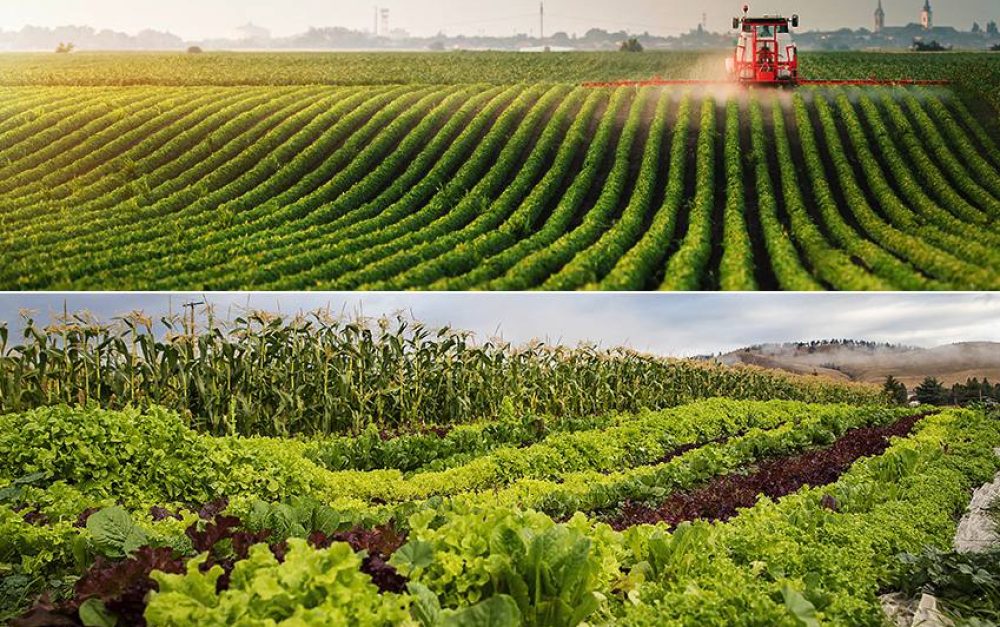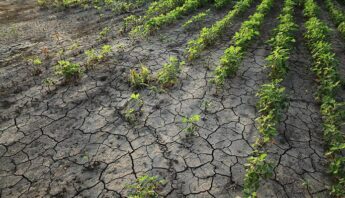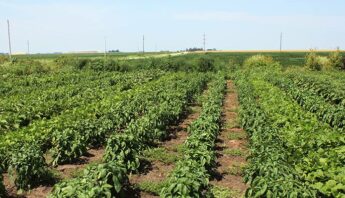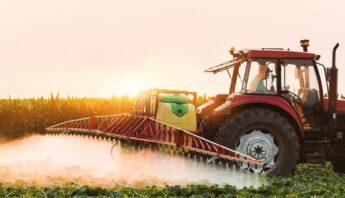Four years ago, on a sunny day in April much like today, I wrote a post entitled “Roundup, cancer and the future of food”, warning of the impending failure, health and environmental harms of leaving our food system in control of the world’s biggest pesticide company.
Four years ago, on a sunny day in April much like today, I wrote a post entitled Roundup, cancer and the future of food, warning of the impending failure, health and environmental harms of leaving our food system in control of the world’s biggest pesticide company. Monsanto (now acquired by Bayer), the manufacturer of the infamous herbicide Roundup, has since been found guilty of negligence and liable for the cancer linked to its flagship pesticide. Bayer’s stock value has plummeted, as it faces a shareholder revolt and over 13,000 more lawsuits on similar charges.
The pesticide industry’s “spray-all” approach didn’t work back then, and it’s not working now. Roundup-resistant “superweeds” now infest close to 100 million acres of farmland across the country.
The Bayer (Monsanto) response? More patented seeds, this time engineered to resist the highly volatile herbicide, dicamba. Ignoring farmers’ concerns for the past few years about dicamba drift damaging their crops, USDA and EPA have continued to approve both the seeds and the dicamba formulations. Those decisions have proven disastrous.
Dicamba drift on the rise
As we enter the 2019 growing season, here’s what farmers and rural communities are facing:
- Millions of acres of crop loss: dicamba drift damaged nearly five million acres of soybean between 2017 and 2018, according to weed scientist estimates. These numbers are extremely conservative due to significant under-reporting (farmers don’t like to turn their neighbors in) and limited state capacity to assess damage.
- Drift-damaged farms and ecosystems: highly toxic to most broadleaf (non-grass) plants, dicamba drift has already damaged countless fruit and vegetable farms, orchards, commercial, residential and backyard gardens, trees in state parks, and natural habitat. With no agency keeping track, the full amount of damage remains unknown.
- Starving bees: beekeepers from South Dakota to Arkansas have reported severe hive losses in areas where critical pollen sources like redvine have been decimated by dicamba drift.
- More “superweeds”: the kicker for grain farmers could well be the bad news out of Kansas last month: already, a dicamba-resistant population of palmer amaranth (aka pigweed, the bane of many a farmer’s existence) has turned up there. And just a few months earlier, dicamba-resistant pigweed was found in Tennessee. Pigweed had previously developed “cross-resistances” to multiple classes of herbicides including glyphosate, atrazine and others. It’s no wonder that dicamba-resistant weed populations are now spreading, as weed scientists have warned all along.
Dicamba use is expected to soar in 2019, as more soybean growers succumb to pressure to plant Bayer’s (Monsanto) dicamba-resistant soybeans, if only to protect themselves from drift. EPA estimates that over 60 million acres of dicamba-resistant “Xtend” soybeans will be planted this year, with another 80 million acres of dicamba-resistant corn likely to be added if and when the agency approves Bayer’s newest seed, XtendFlex corn. The Xtend crops will be protected, but other farmers’ crops and the rest of the landscape will be exposed and at risk.
These types of monocropping systems are the perfect scenario to develop herbicide resistance. – Kansas State University, 5 March, 2019
The devastating agricultural and ecological impacts of pesticide dependence tied to genetically engineered seeds radiate outwards, resulting in economic blows to local businesses, lost livelihoods, fractured relationships and weakened state economies — impacts from which many rural communities may simply not recover.
The future of farming
The onslaught of more corn, cotton and soybean seeds designed to be used with yet more herbicides is precisely what we don’t need.
Chemical-intensive industrial agriculture means fewer, not more options for the future, with all-too-frequent reports these days of how excessive pesticide use is polluting streams, depleting the earth’s soil, contributing to catastrophic declines not only of pollinators but also of total insect biomass, and possibly even contributing to the emergence of a new and deadly drug-resistant fungal disease in hospitals. Our industrialized methods of growing corn are now recognized as a major cause of air pollution, responsible for thousands of premature deaths every year.
States are stepping up in the face of the latest industry-generated pesticide crisis, trying to protect their farmers’ livelihoods from dicamba drift by limiting times of application. But even these efforts won’t keep the chemical from moving, scientists say. And casting a shadow across this desperate patchwork of state rules, EPA is now threatening to disallow states from taking even these limited actions.
The good news is that a growing number of farmers are waiting neither for state nor federal action. They are abandoning the failing model of endless chemicals, instead diversifying their farming systems and embracing the mantra of healthy soils and healthy communities.
We had spun ourselves into a hole with chemistry . . . But the more I learned, the more I realized the importance of diversity in our fields and what that means for soil health and soil life . . . We’ve gone from trying to figure out how to control a weed to completely overhauling our system . . . We’ve reduced chemical use and now we’re almost 100% non-GMO. — Adam Chappell, Arkansas farmer
To build a strong and viable farm future, PAN is calling for a Green New Deal that puts power back in the hands of farmers, workers and rural communities. Join us in planting the seeds of a democratic, culturally, economically and ecologically vibrant, climate-resilient food and farming system for all.








